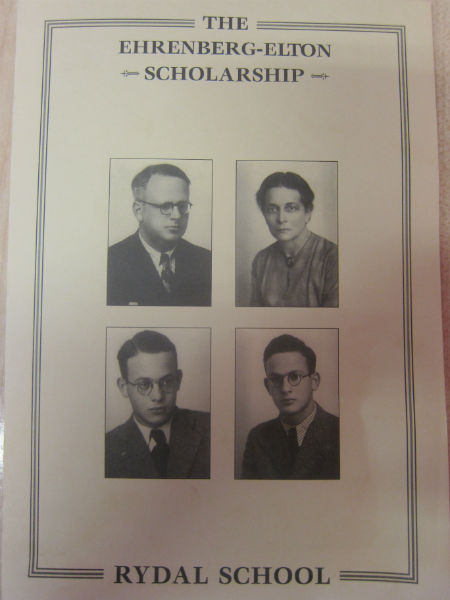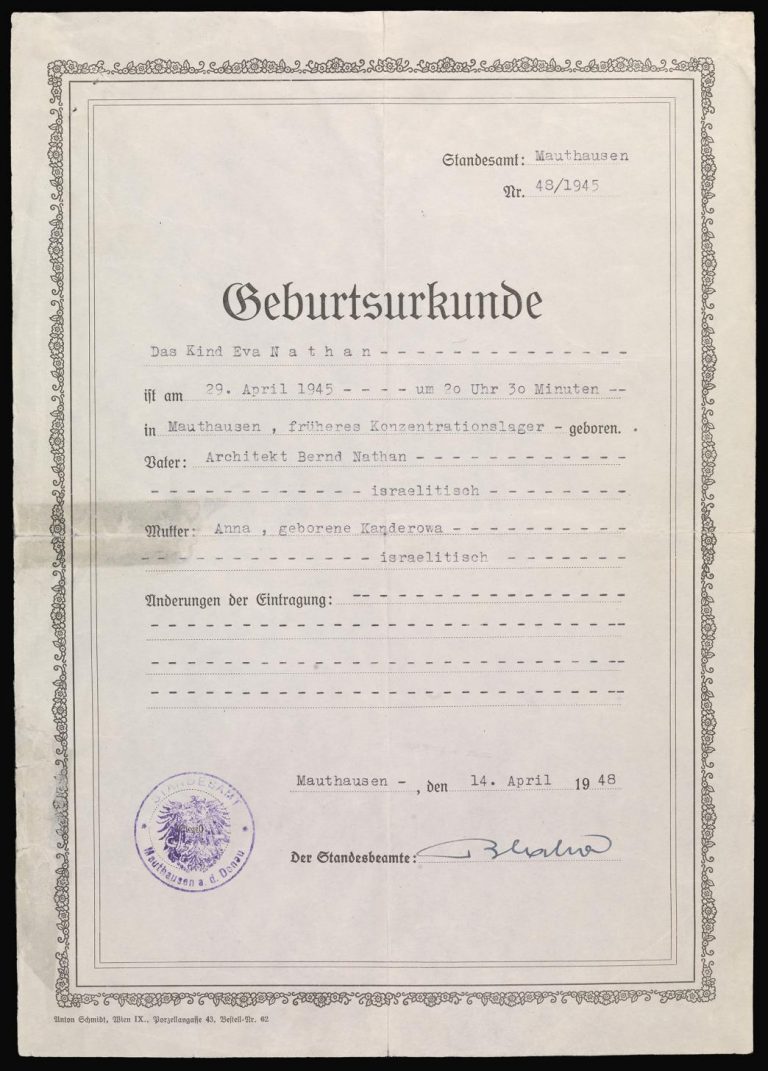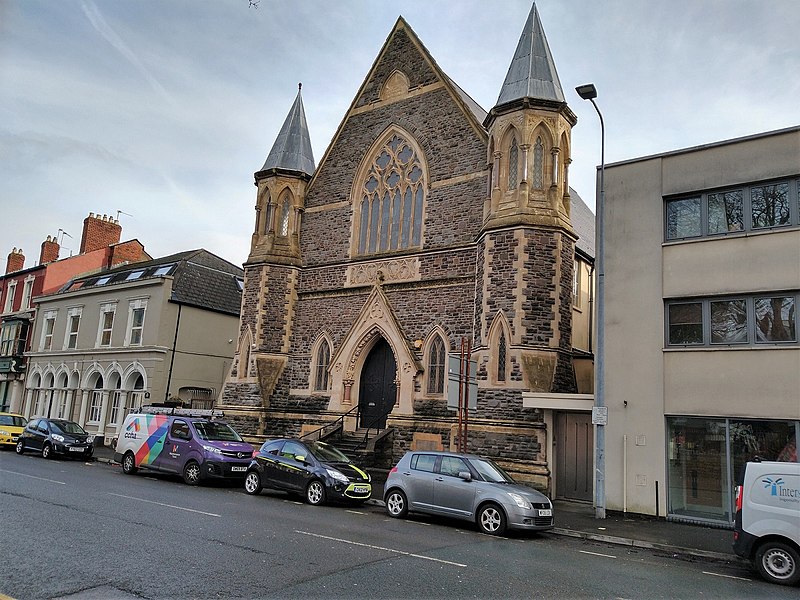After the war, many refugees moved on from Wales. Government policy emphasised re-emigration rather than settlement. Several Jewish doctors who had arrived in the early 1930s, for example, were not offered permanent positions, and most settled in the United States. The situation was similar for Jewish refugee academics, who could only obtain temporary posts. Werner Friedrich Bruck, a German-Jewish professor of economics who worked at University College of South Wales and Monmouthshire between 1934 and 1938, left for New York in 1940. There he found a position as professor of political management at the New School for Social Research.
The brothers Geoffrey and Lewis Elton (originally named Gottfried and Ludwig Ehrenberg) came from Tübingen in Germany. They were evacuated to Wales in 1939 as teenagers and were educated at Rydal Penrhos, a Methodist boarding school in Colwyn Bay. After the war, in which Geoffrey served in Italy, they moved to England to become leading experts in their respective fields of history and physics, with both later teaching at Cambridge. Rydal Penrhos now has a scholarship available to pupils from Eastern Europe named the Ehrenberg-Elton Scholarship, in honour of their illustrious alumni.
One adult refugee who remained in Wales was Erich Holler, a Czech-born academic who became chair of German at the University College of Swansea in 1950. Another was Austrian Alfred Feiner, who worked as a doctor in Pontypridd between 1941 and 1977.
Many younger refugees also remained in Wales. Although Gwrych Castle was abandoned as a hachshara in 1941, some children stayed in the area for several years. According to a survey carried out by The Association of Jewish Refugees in 2007, 12 of 22 children surveyed remained in the UK after the war, with five emigrating to Palestine and four to elsewhere. Renate Collins, a Kindertransportee from Czechoslovakia, made a home and family for herself in Wales, and now has two children and five grandchildren with her husband David.
Other refugees arrived in Wales in the postwar period. Following the closure of Gwrych Castle, some child refugees lived in a hostel in St Asaph, Denbighshire. After the war, this hachshara hosted several Holocaust survivors (known as ‘The Boys’) who arrived in Britain as part of a scheme launched by Jewish philanthropist Leonard Montefiore. One of the ‘Windermere Boys’ who came over in August 1945 was Polish-born Adolf Wasserzeicher. He changed his name to Alec Walters, married and lived in Wales until his death.
Irka Reichmann was a child in the Warsaw Ghetto during the war. When the Nazis took away her parents and sister, she hid in a cupboard to avoid detection. Her parents were both killed, although her sister managed to survive. With no one left to care for her, she lived in the sewers and had to scavenge for food. In March 1946, she was rescued by Rabbi Solomon Schonfeld, who arranged for her to come to Britain. She was taken in by a foster family and attended Howell’s School in North Cardiff. Although unable to speak any English, she eventually adjusted. Corresponding with her uncle in 1948, she said that cookery was her favourite class, but she could not taste what she cooked because it was not kosher. She later married and moved to London.
William Dieneman fled Germany in 1939, and was educated in Bristol and Oxford. He worked as a librarian in several countries before moving to Aberystwyth in 1970 to work at Aberystwyth University Library. He worked there until his retirement in 1995, and died in 2018.
Eva Clarke was born at the gates of Mauthausen Concentration Camp in April 1945. Her mother had managed to keep her pregnancy secret from the guards at Auschwitz, where she had previously been held prisoner. When Auschwitz was evacuated in early April 1945, the inmates were transported to Mauthausen, and Eva’s mother gave birth on a cart just outside the camp. A Jewish doctor, a gynaecologist at the University of Belgrade who was also an inmate, cut the umbilical cord. She weighed only 3lb (1.5kg). She later remembered:
there are two reasons why [she and her mother] survived, and the first is a very chilling reason. On the 28th of April 1945, the Germans had run out of gas for the gas chambers. My birthday was the 29th. So presumably had my mother arrived on the 26th or the 27th again, I wouldn’t be talking to you now. And the second reason why we survived was because about four or five days after my birth, the American Army liberated the camp.
After the liberation of Mauthausen, her mother and stepfather moved to Cardiff, where Eva grew up. Her biological father did not survive; he was killed a week before the Soviets liberated Auschwitz.
Eva attended Rhydypenau Primary School and Our Lady’s Convent School, and remembers her first day:
“I remember being taken around the school in Llandaff by the the headmistress. I remember thinking that she was ancient – she was probably about 40 – and she was vast – she was probably plump. And I do remember not understanding a word she said. My mother said I learnt very quickly.”
She later moved to London and married a Welshman. The couple settled in Cambridge and Eva worked as an administrator at Cambridge Regional College. She was later awarded an honorary doctorate for her work in Holocaust education, and regularly speaks at commemoration events organised by the Holocaust Educational Trust.
Read more about Eva’s story here (External)
Despite the fact that many refugees had been in Britain for over a decade, the naturalisation process was slow. Even those serving in the forces had to wait until after the war was over, and others had to wait even longer. Dorothy Fleming became a British citizen in 1947 through the naturalisation of her father, Erich Oppenheimer; the delay meant she had to take out a loan from a Jewish charity to help her get through college. She went on to become a teacher.
In Cardiff, many refugees formed the backbone of a new Reform congregation, which was founded in 1948. One of the founders was the father of Des Golten, who also had a factory at Treforest Trading Estate. Cardiff New Synagogue (later renamed Cardiff Reform Synagogue) increased its membership from 220 to 319 people between 1949 and 1970, and around a third of the original members were former refugees.
Belgian refugee Karel Lek, who moved to Bangor in North Wales (and subsequently Beaumaris on Ynys Môn), became an artist after the war. He exhibited his work at numerous galleries in Britain and Europe, including the Royal Academy. Karel was inducted into the Royal Cambrian Academy in 1955, and was awarded an MBE in 2003. He later said that “The misfortunes of the last War brought me, as a boy of eleven, from Antwerp to North Wales, where I have lived for over 70 years. I sometimes wonder whether this qualifies me to call myself a Welshman!” He passed away in 2020.
Read more about Karel’s story here (External)
Further reading
’45 Aid Society (https://45aid.org/) – this organisation commemorates ‘The Boys’ who came to Britain after the war
‘Ben Elton speaks on how family was welcomed at Rydal Penrhos after fleeing Nazi Germany’, Boarding Schools’ Association, 6 September 2016 (https://www.boarding.org.uk/media/news/article/3748/ben-elton-speaks-on-how-family-was-welcomed-at-rydal-penrhos-after-fleeing-nazi-germany)
Nick Dermody, ‘Holocaust survivor Eva Clarke returns to Mauthausen birthplace’, BBC News, 5 May 2013 (https://www.bbc.co.uk/news/uk-wales-22383638)
Louise London, Whitehall and the Jews, 1933-1948: British Immigration Policy, Jewish Refugees and the Holocaust (Cambridge, Cambridge University Press, 2000)
Cai Parry-Jones, The Jews of Wales: A History (Cardiff: University of Wales Press, 2017)


